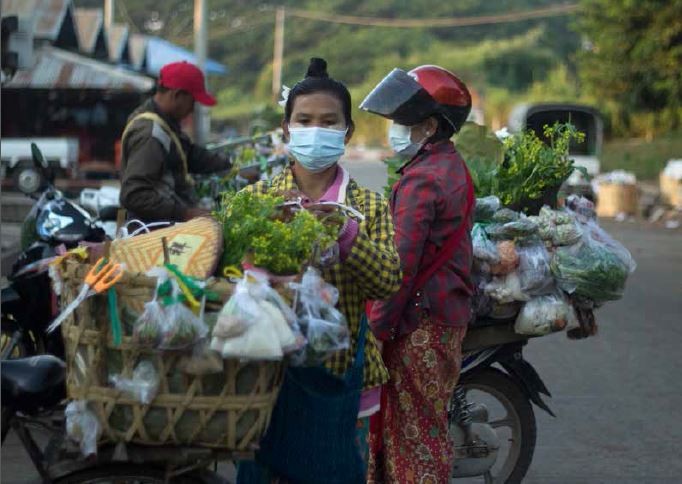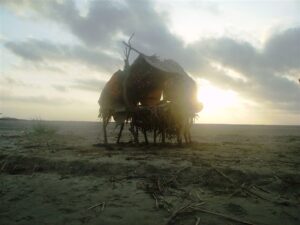Survivors of human trafficking need help to deal with post-rescue trauma, and the experience they go through during identification interviews and legal proceedings is painful. Some face re-victimisation and are punished for crimes traffickers force them to commit. Others are stigmatised and don’t have a support system.
By Mehru Jaffer / IPS
For over two decades, Nina tossed around like a leaf in a storm. While a teenager growing up in Goa, India, she was lured into the sex trade, and pimps kept a huge chunk of the money that she earned as a sex slave. Nina was often bruised. Once, she refused sex with a man who did not want to use a condom. He beat her so severely that she had found it difficult to breathe.
One day the police raided the premises where Nina and other girls were kept as prisoners and arrested the pimps. The girls were taken to a protective home run by the local government. She like many other trafficked women abused alcohol and smoked to drown her sorrows.
Nina is now in her thirties and cured of her addictions. Her life is comfortable compared with her twenties when she was forced to live in the company of traffickers and pimps.
Lisa Pires of the Presentation Sisters Order told IPS that she had first met Nina in 2019. However, Pires declined to share Nina’s name and whereabouts. Today both government officials and social activists jealously guard the identity of all trafficking survivors who struggle to lead normal lives.
The survivors need help to deal with post-rescue trauma, and the experience they go through during identification interviews and legal proceedings is painful. Some face re-victimisation and are punished for crimes traffickers force them to commit. Others are stigmatised and don’t have a support system.
“We are happy to share stories of victims without revealing their exact identity as society needs to listen and to learn from those who have survived trafficking,” adds Amala Kulandaisamy, 40, social activist and administrative head at the Nagoa centre.
The Presentation Sisters have been working in Goa since 1967.
The Nagoa Centre opened in 2001 in the ancestral home of Pires. Her parents gifted the 110-year-old house to the Order of the Presentation Sisters.
Pires joined the order in 1958 and shares her concerns about what is happening to young women today.
Nina’s story is similar to that of countless Indian women from poverty-stricken parts of eastern Uttar Pradesh (UP) trafficked to Goa for commercial sexual exploitation, Pires says.
Surrounded by half a dozen starving siblings, a mother with mental health issues and an alcoholic father, Nina had fled her village when she was barely 15 years old. Soon after, a gang of boys picked up the vulnerable Nina. They promised her a job in Goa.
Goa is considered a significant destination in India for human trafficking and related commercial sexual work. Girls and women are trafficked to Goa from most states in India, including the countryside near Goa. They are also trafficked from Nepal, Bangladesh, Uzbekistan, Kyrgyzstan, Turkmenistan, Turkey, Russia, and Thailand. While fewer women are trafficked from Nepal, the number of those sold and bought from Bangladesh increased.
The sex work is primarily concentrated in the coastal belt of North Goa, with maximum rescue operations by the police taking place around the stunningly beautiful beaches of Calangute and Arjuna. Now commercial sex work is said to be spreading from the tourist areas of the coastal belt of North Goa to the mainland and away from tourist hubs.
Throughout last year, Pires worked to reduce trafficking. The theme for 2021 was Victims’ Voices Lead the Way, with social activists spending time with human trafficking survivors counselling them. The survivors are seen as key in the fight against human trafficking. The theme focused on preventing the crime, identifying, and rescuing survivors, and supporting them on the road to rehabilitation.
Local people are encouraged to check the background of those wanting to rent accommodation and ensure that tenants are not part of any human trafficking activity.
The Presentation Sisters are diligent in their work against the trafficking of women and children and sensitive to their sexual exploitation. They provide alternative employment opportunities to survivors and constantly raise awareness against this organised crime.
A vital exercise today is to document the experience of survivors without revealing their identities.
The idea is to turn the suggestions of survivors into concrete action – a more survivor-centred approach to combat human trafficking and encourage lawmakers to pass legislation that will better protect citizens vulnerable to sexual exploitation and ensure they receive justice.
They say that there is a need for stricter regulation of massage parlours and dance bars where sexual exploitation of the vulnerable is high.
Nina is fortunate. She survived the exploitation and has recently visited Potta, a well-known temple town in Kerala. Here she experienced spiritual calm and has returned to Goa to find a regular job as a caretaker in a private home.
Image: Mehru Jaffer / IPS
This piece has been sourced from Inter Press Service












